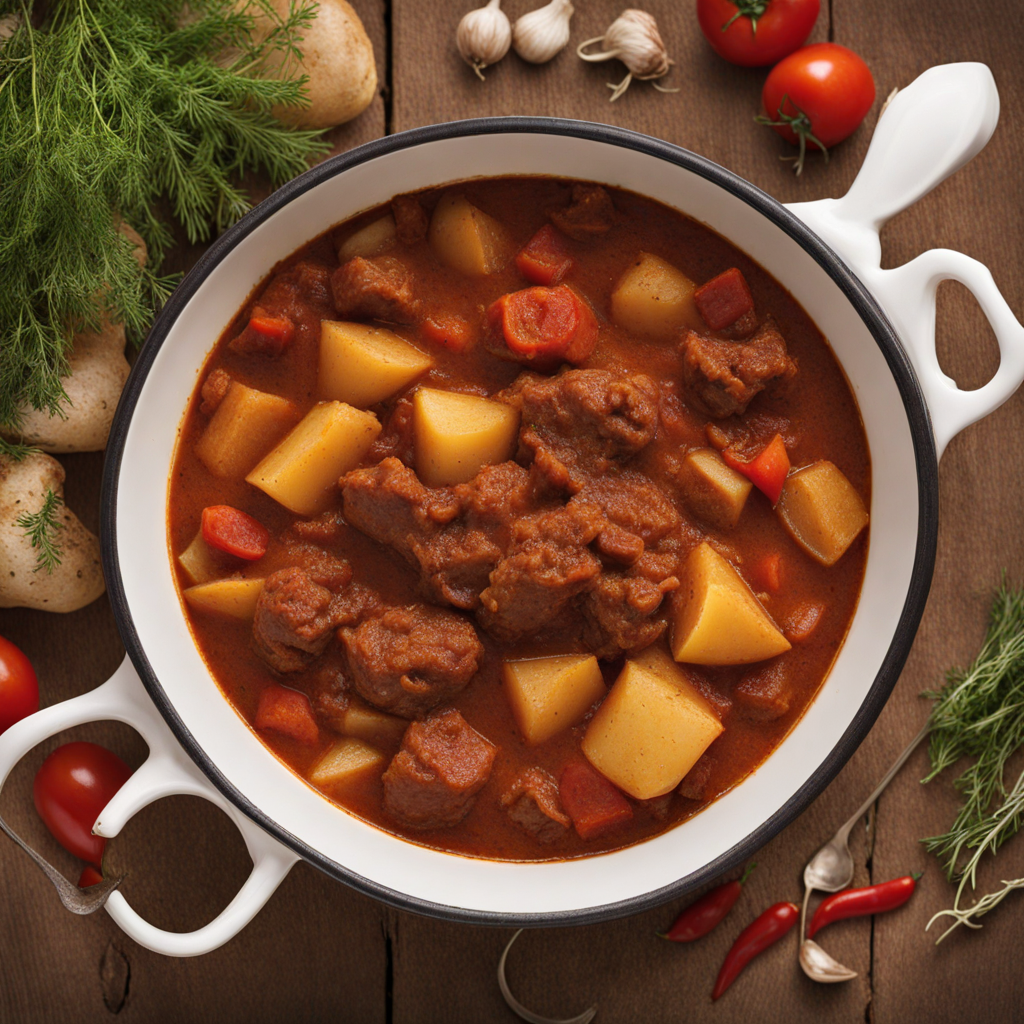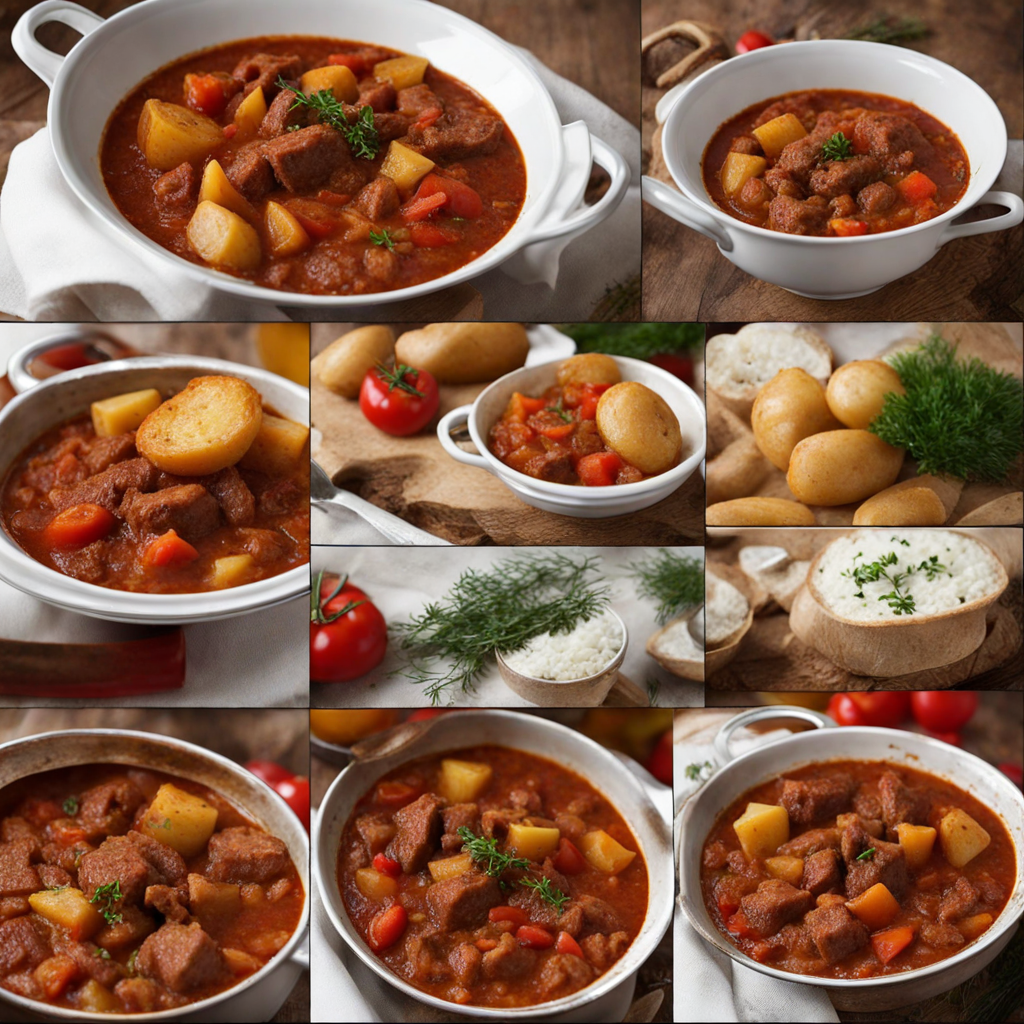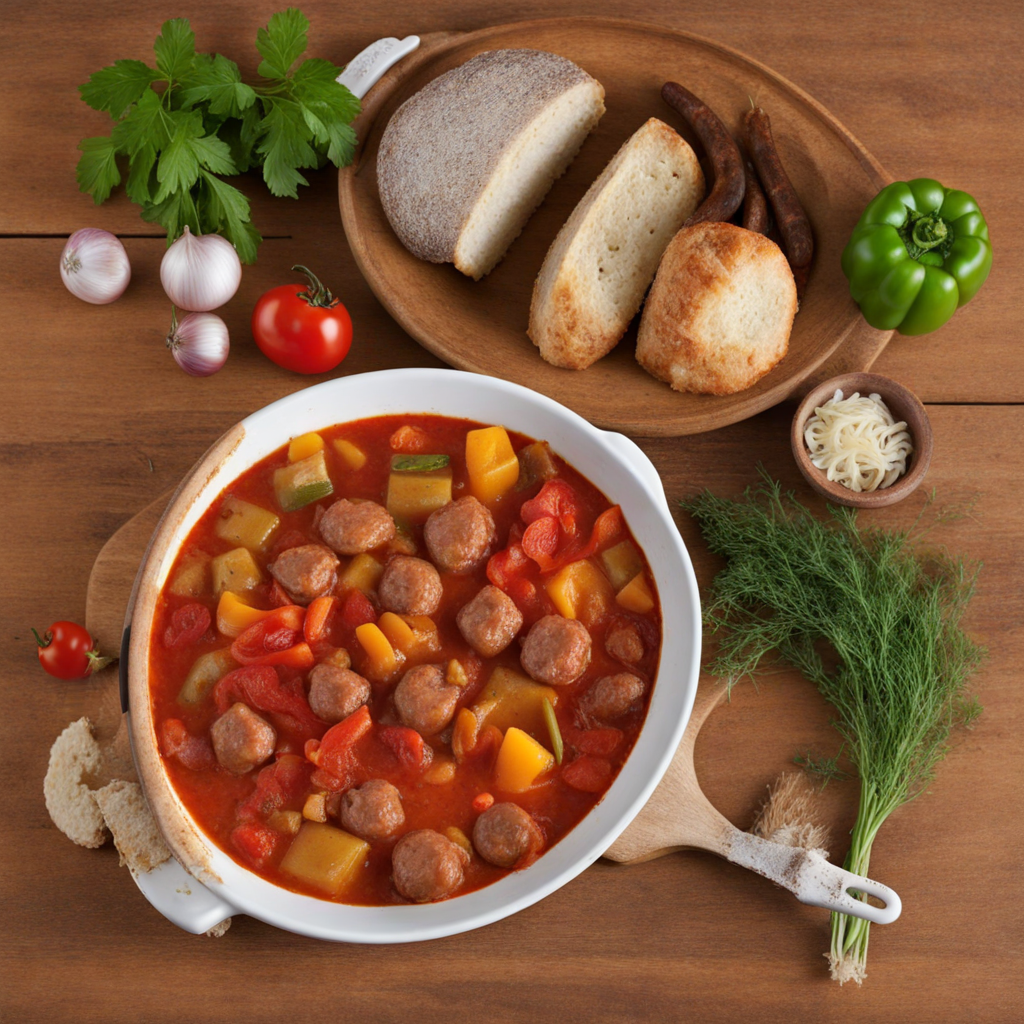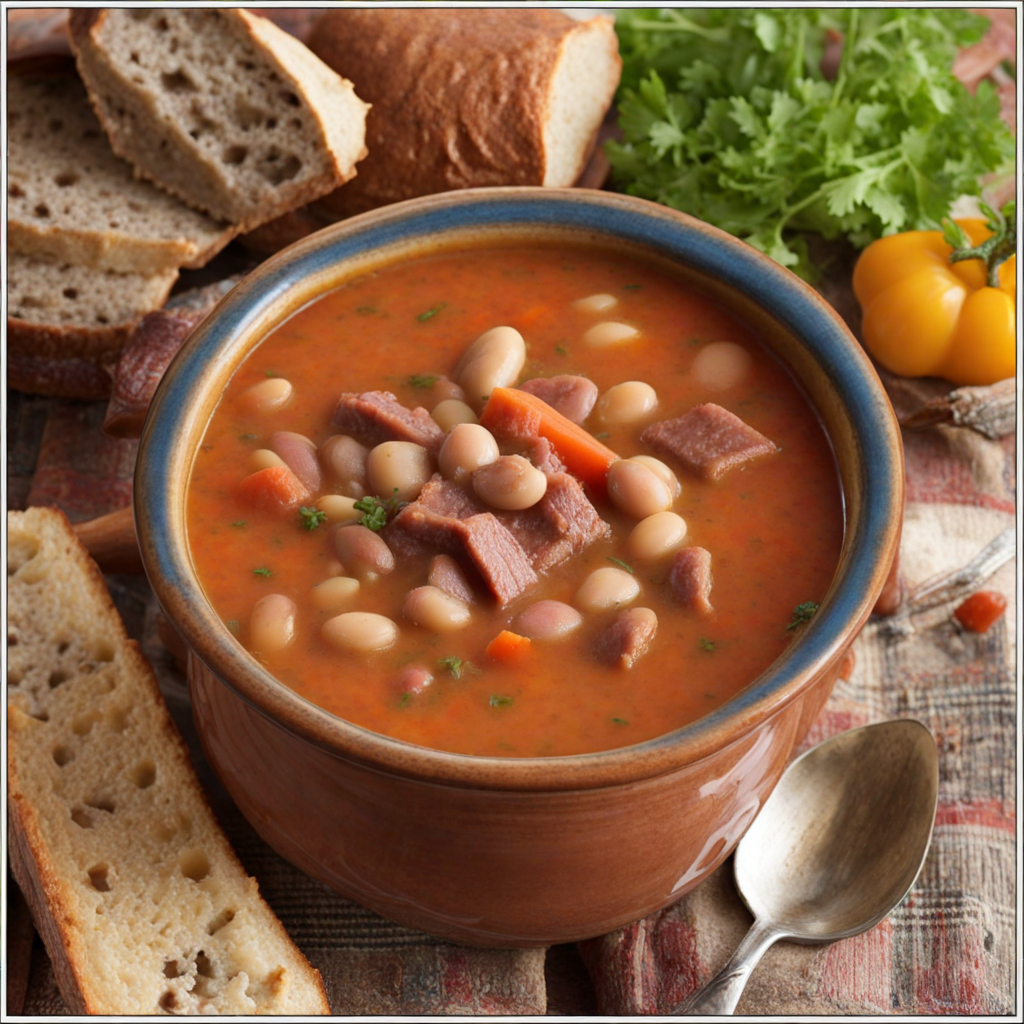Goulash
Goulash is a hearty and robust stew that hails from Hungary, celebrated for its rich flavors and comforting qualities. At its core, goulash features tender pieces of beef, which are slowly simmered to perfection with an array of vegetables, such as potatoes, carrots, and bell peppers. The star of the dish is the vibrant paprika, a staple of Hungarian cuisine, which infuses the stew with a deep red color and a warm, smoky flavor that is both enticing and satisfying. The use of local herbs and spices, including caraway seeds and bay leaves, adds layers of complexity that make each bite a delightful experience. The preparation of goulash is as important as its ingredients, as it is traditionally cooked in a cauldron over an open flame, allowing the flavors to meld beautifully. The slow-cooking process not only tenderizes the meat but also allows the spices to develop a depth that is distinctive to Hungarian goulash. Served with a side of freshly baked bread or dumplings, this dish offers a filling meal that is perfect for gatherings or cozy nights in. The cultural significance of goulash in Hungary is immense, often seen as a symbol of hospitality and warmth, making it a dish that brings people together. When tasting goulash, one is met with a symphony of flavors that range from savory to slightly sweet, with a hint of heat from the paprika. The broth is thick and rich, offering a satisfying mouthfeel that complements the tender meat and vegetables. Each spoonful is a reminder of the rustic roots of Hungarian cooking, embodying the essence of comfort food. Whether enjoyed at a local eatery in Hungary or made at home, goulash is a dish that invites exploration and appreciation, promising a culinary adventure that warms the soul.
How It Became This Dish
The History of Gulyás: Hungary's Culinary Treasure #### Origins of Gulyás Gulyás, often anglicized as goulash, is much more than a mere dish; it is a symbol of Hungarian hospitality and a testament to the country's rich cultural heritage. The origins of gulyás date back to the 9th century, during the early settlement of the Magyars in the Carpathian Basin. The term "gulyás" itself derives from the Hungarian word for "herdsman" (gulyás), highlighting its roots in the pastoral traditions of Hungary. Initially, gulyás was a simple meal prepared by cattle herders or "gulyások" who roamed the plains with their herds. They would cook the meat of their livestock over an open fire, often using a cauldron (bogrács) suspended above the flames. The dish was a practical solution for the nomadic lifestyle of these herders, who needed a hearty and sustaining meal that could be prepared with minimal resources. The basic components of early gulyás included beef (often from cattle raised by the herdsmen), water, and salt, with the addition of local vegetables and spices depending on availability. #### Cultural Significance As Hungary evolved, so too did gulyás. By the 18th century, gulyás had transitioned from a rustic herder’s meal to a dish that was celebrated in Hungarian cuisine. It became a staple of Hungarian identity, particularly during the Austro-Hungarian Empire, when the dish began to gain notoriety beyond Hungary's borders. The incorporation of paprika, a spice that has become synonymous with Hungarian cooking, during the 19th century marked a significant turning point in the evolution of gulyás. The use of paprika not only enhanced the flavor but also imparted a vibrant red color that became characteristic of the dish. Paprika’s introduction can be traced back to the late 16th century when it was brought to Europe from the Americas. By the time it was embraced by Hungarian cooks, it had become a defining feature of the nation's culinary landscape. The spice not only transformed gulyás but also solidified its status as a national dish, emblematic of Hungarian culture. The dish came to represent the spirit of the Hungarian people—robust, hearty, and imbued with a sense of community. #### Development Over Time Throughout the 19th and 20th centuries, gulyás continued to evolve, influenced by regional variations and the availability of ingredients. The 19th century saw the emergence of different versions of gulyás, reflecting the diverse culinary traditions of Hungary’s regions. This period also marked the beginning of gulyás being served in restaurants, moving it from its humble herder origins to the dining tables of the urban populace. One of the most famous regional variations is "gulyásleves," or goulash soup, which is a brothier version of the traditional stew. Gulyásleves typically contains not only beef but also root vegetables such as carrots and potatoes, along with spices like caraway seeds and, of course, paprika. This soup variation became particularly well-loved, especially in colder months when a warm, hearty meal was essential. By the early 20th century, gulyás had gained international recognition. Hungarian immigrants brought the dish to various parts of the world, particularly to the United States and Canada, where it was embraced and adapted. In the United States, gulyás became a popular comfort food, often served in a more Americanized form, incorporating ingredients like tomatoes and macaroni. Nevertheless, the essence of the dish remained intact, retaining its roots in Hungarian culture. #### Gulyás in Contemporary Culture In contemporary Hungary, gulyás retains its status as a beloved national dish, often served at gatherings and family events. The preparation of gulyás has become a ritual in itself, bringing families together to cook and share the meal. Traditionally, it is cooked in large cauldrons over open fires, especially during festivals and communal gatherings, emphasizing the dish's communal and social aspects. The Hungarian National Gulyás Festival, held annually in the town of Szeged, celebrates this iconic dish and its significance in Hungarian culture. Chefs from across the country come together to compete in cooking the best gulyás, showcasing regional variations and traditional cooking methods. The festival attracts thousands of visitors, highlighting gulyás not only as a dish but as a cultural event that fosters community spirit and national pride. #### Variations and Global Influence As gulyás traveled beyond Hungary, it inspired numerous adaptations. In Austria, for instance, "gulaschsuppe" became a popular dish, while in Germany, it took on various forms, often incorporating beer and additional spices. In the United States, it evolved into "goulash," a dish that typically features ground beef, macaroni, and a tomato-based sauce, showcasing how cultural exchanges can lead to new interpretations. Despite these variations, authentic gulyás remains a cherished dish in Hungary, with each region boasting its own unique twist. Whether it’s the rich, meaty stew of the plains or the spicier versions found in the south, gulyás continues to captivate taste buds and hearts alike. #### Conclusion In conclusion, gulyás is far more than a simple stew; it is a reflection of Hungary's agricultural history, a symbol of national identity, and a dish that encapsulates the spirit of community. From its humble beginnings among herdsmen to its status as a cherished national dish, gulyás has evolved while remaining deeply rooted in Hungarian tradition. Its rich flavors and hearty ingredients tell the story of a nation, inviting both locals and visitors to gather around the table and partake in a culinary experience that transcends time and borders. As gulyás continues to adapt and inspire, it remains a delicious testament to the resilience and creativity of Hungarian cuisine.
You may like
Discover local flavors from Hungary







